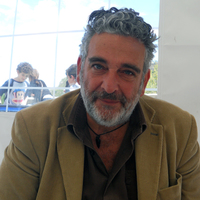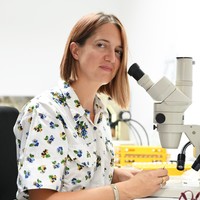Pollen data of the last 500 ka BP at Lake Ohrid (south-eastern Europe), supplement to: Sadori, Laura; Koutsodendris, Andreas; Panagiotopoulos, Konstantinos; Masi, Alessia; Bertini, Adele; Combourieu-Nebout, Nathalie; Francke, Alexander; Kouli, Katerina; Joannin, Sébastien; Mercuri, Anna Maria; Pe...
Here we present the pollen data obtained for the DEEP core of Lake Ohrid located at the border be... more Here we present the pollen data obtained for the DEEP core of Lake Ohrid located at the border between Albania and F.Y.R. of Macedonia. The very long sequence covers the last 500 ka BP in ca. 200 m. The study has been carried out by several European palynological laboratories. The age model of this part of the core is based on 10 tephra layers and on tuning of biogeochemical proxy data to orbital parameters. The original paper, published by Sadori et al. 2016 (https://doi.org/10.5194/bg-13-1423-2016), has been followed by a corrigendum due to chemical procedure problems that affected 104 samples. The record shows a progressive change from cooler and wetter to slightly warmer and drier interglacial conditions. This shift in temperature and moisture availability is visible also in vegetation during glacial periods. Pollen results support the notion that Lake Ohrid has been a refugium area for both temperate and montane trees during glacials.











Uploads
Papers by Laura Sadori
Archaeobotanical Working Group. It was in 2005. After several very simple and modestly
organized meetings our group was transformed into the Conference of Environmental
Archaeology since 2010 as Czech speaking action. Yet in 2015 we decided to organize first international meeting in English.
So, welcome to České Budějovice! This conference is connected with main activity of the PAPAVER, Centre for human and plant
studies in Europe and Northern Africa, founded in 2012 by the Laboratory of Archaeobotany and Palaeoecology, Faculty of Science with collaboration of the Institute of Archaeology,
Faculty of Philosophy, University of South Bohemia. The aim of the PAPAVER centre is to develop ties within the interdisciplinary team consisting of paleoecologists, archaeologists, and vegetation ecologists in order to create an effective space for the study of climatic, cultural as well as landscape changes in vegetation and crops along a gradient from Northern Africa across Central Europe up to the coldest areas of the north. The purpose of the project is to connect and coordinate key experts of international repute and thus provide the South Bohemian team the dynamics and impulses for the development of top quality research. A research centre bears the name of a genus of poppies (Papaver), whose representatives are distributed from the coldest areas in the High Arctic to the warmest Northern Africa, thus, representing the region targeted by the project research interests.
21st January 2015,
Jaromír Beneš – Petr Pokorný